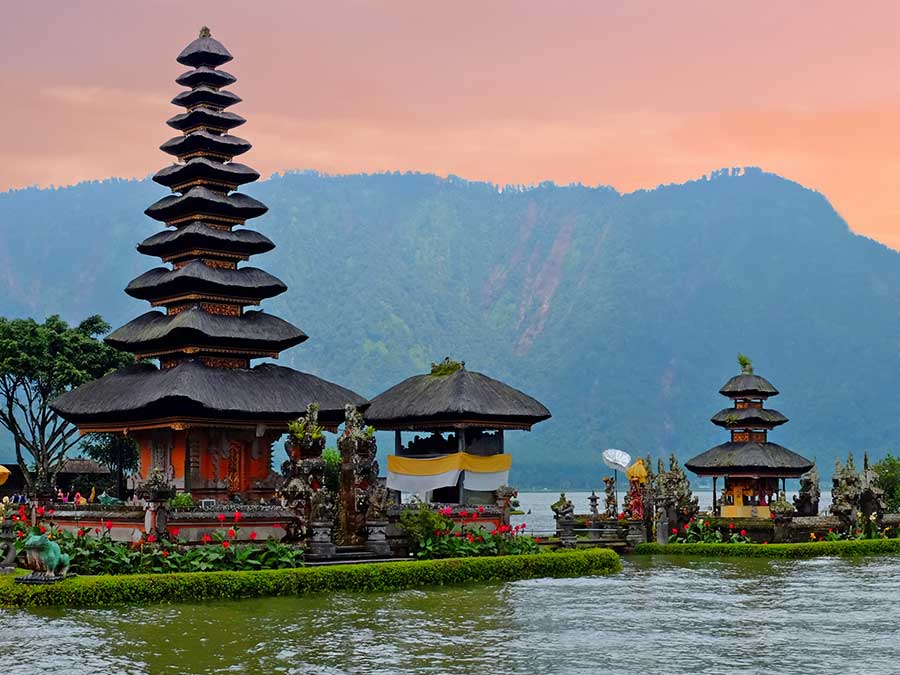Travel insurance for Bali
With sun, surf and incredible scenery, it’s no surprise that Bali is one of the most popular holiday destinations for Australian travellers. Whether you’re looking to explore captivating temples, enjoy the bustling Kuta Beach, or simply unwind on the tropical shores, the Indonesian island caters to all kinds of travellers.
However, Australians should remember that travelling to Bali presents a number of dangers, from food poisoning and road accidents to pickpocketing and volcanic ash clouds.
Proper insurance is essential to protect yourself on holiday, and understanding what your policy covers is the best way to avoid unexpected costs.
Do I need travel insurance for Bali?
Travelling to Bali is an exciting and memorable experience -however, amidst the anticipation and planning, be sure not to overlook one essential aspect: travel insurance. While many aspects of travel insurance are valuable, a key reason to consider it for Bali is medical cover. It's essential to remember that your Australian Medicare coverage won't apply when you're in Indonesia. While you can generally rely on Medicare for medical expenses at home, you won't have the same safety net while travelling. This means that if you require medical treatment during your trip to Bali, you'll have to cover the costs yourself, unless you’ve got suitable travel insurance.
As one of Australia's favoured cheap holiday destinations, a trip to Bali can become unexpectedly costly in the face of emergencies. For instance, if you require emergency evacuation back to Australia, you could face expenses up to $80,000!* . This hefty price tag emphasizes the significance of remembering to pack travel insurance with you on your trip to Bali.
Does my policy cover scooter, motorcycle or car accidents?
Bali’s roads are notoriously dangerous. Each year, hundreds are killed in road accidents on the island and hundreds more suffer serious injuries. Motorbikes may be a popular way to travel the island but they pose considerable danger to tourists.
That’s why with our insurance you have the option to add on mopeds (sometimes called 'scooters') and motorbikes cover to your policy.
Even if you’ve added this option to your policy, there is no cover if you’re riding a moped or motorbike (whether as the driver or passenger):
- where the engine is more than 200cc;
- where you are not wearing a helmet on your head;
- where the driver does not have a valid driver's licence as required from the country of permanent residence;
- where the driver does not have a driver's license as required in the country you are in, for the same class of moped or motorbike being ridden;
- in a professional capacity;
- where you are racing, including against time and/or in timed events, of any sort;
- where you are participating in a competition which involves monetary prizes; or
- if you or the driver were breaking any law including driving laws or highway rules. For example: speed limits and blood alcohol limits.
Will my insurance cover natural disasters in Bali?
Bali may be beautiful, but it’s also prone to natural disasters like flooding, tsunamis and cyclones. The island is situated on the ‘Pacific Ring of Fire’, which also makes it particularly vulnerable to earthquakes and volcanic eruptions.
So, will your travel insurance policy cover you for a natural disaster event in Bali? You must make sure it’s still safe to travel to your destinations by checking for travel advisories on the Smartraveller website. You need to check this when you buy your insurance, again before you start your journey, and before leaving for each new destination.
Your policy may be affected if the travel advisory on the Smartraveller website is ‘Do not travel’ or ‘Reconsider your need to travel’.
If your travel plans need to be changed due to an unexpected natural disaster, there may be cover under the International Comprehensive policy.
Am I covered for stolen or damaged valuables, like my phone, camera and laptop?
Whether it be theft, mistake or plain bad luck, there are countless ways to lose your luggage overseas. We understand how frustrating and costly this can be while travelling, which is why our International Comprehensive policy covers you for lost, stolen or damaged personal items that results from an unexpected event.
What are some common ways to lose your valuables in Bali? Petty theft happens frequently on the island, with thieves targeting unwary tourists in crowded areas like markets and bus shelters. Travellers who carry expensive items and flaunt them in the open make themselves vulnerable to theft. Believe it or not, monkeys are another culprit of theft. Always stay vigilant of your valuable items, never leave them unattended, and if there’s a safe at your accommodation, be sure to use it.
How to avoid getting sick in Bali
Nothing can stop your tropical getaway in its tracks like the dreaded ‘Bali belly’. Symptoms of the illness include diarrhoea, vomiting, cramps and weakness - not exactly the island escape you had in mind.
The best way to avoid Bali belly is to be selective with what you eat. The illness can be caused by bacteria in food and water, a radical change in diet, overeating and even travel stress. For this reason, it’s important that you be particularly conservative with your food choices in the first few days of travelling.
To avoid sickness in Bali, remember to:
- Stick to bottled water (including when brushing your teeth)
- Avoid ice cubes and iced drinks
- Wash your hands before eating
- Check all meat has been cooked well (especially chicken)
- Don’t buy fruit from markets that has already been peeled or cut
- If you have hygiene concerns, steer clear of eating street food
Unfortunately, Bali belly isn’t the only illness that travellers have to watch out for. The Smartraveller website recommends that travellers vaccinate themselves for Tetanus, Hepatitis A and B, Typhoid and Rabies before visiting Bali, although these vaccinations aren’t mandatory. There is also the risk of serious illness and even death from alcoholic drinks containing methanol. Avoid local spirits like Arak, and stick to bottled drinks if you are drinking alcohol.
*according to Herald Sun article dated January 10, 2023.
What you need to know
This page includes some information about our products but, as with all insurance policies, eligibility criteria, terms and conditions apply. For our terms and conditions (including information about exclusions, excesses and sub limits) we recommend you read the relevant Financial Services Guide (FSG), Product Disclosure Statement (PDS) and Target Market Determination (TMD) to ensure our travel insurance products are right for you.
You can find the relevant documents here: International Comprehensive, Annual Multi-trip, International Medical Only, Working Overseas, Domestic.
The content of this article is general and provided for information purposes only. Southern Cross Travel Insurance (SCTI) doesn’t guarantee or warrant the accuracy, completeness or currency of any article.
This article may contain hyperlinks to other websites owned or operated by third parties, or references to third party products or services. SCTI isn’t responsible for, and makes no recommendation about, the content or accuracy of any third party website, or for the suitability or performance of any product or service. The inclusion of a link in this article doesn’t imply that SCTI endorses the website or third party product/service.






